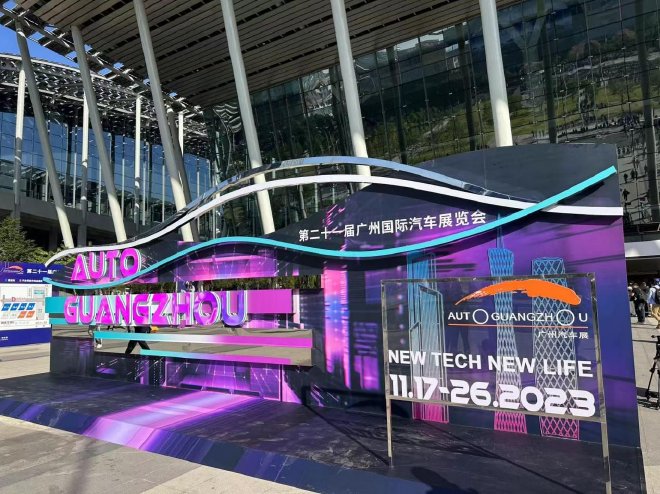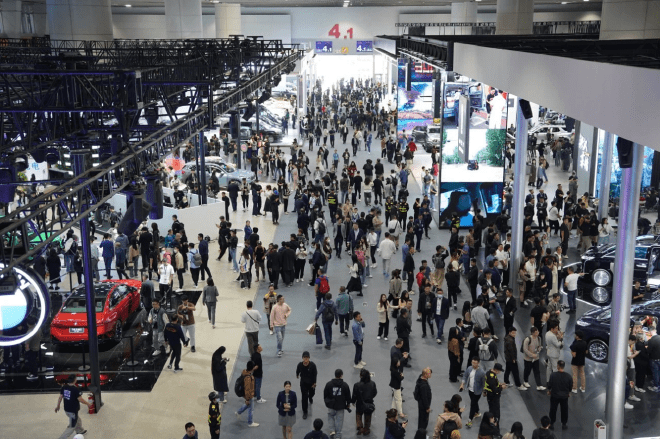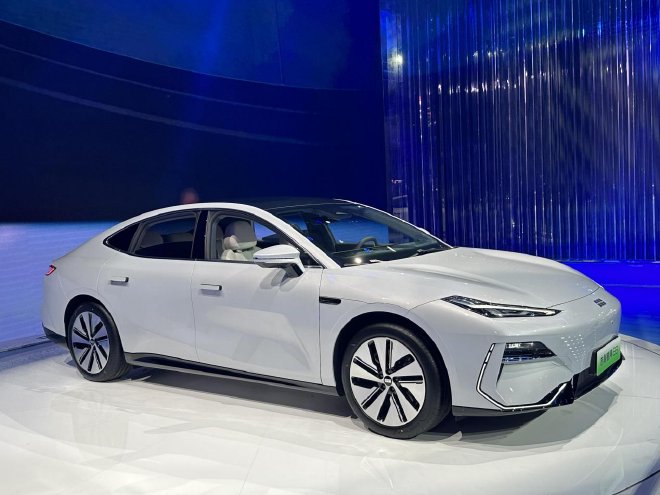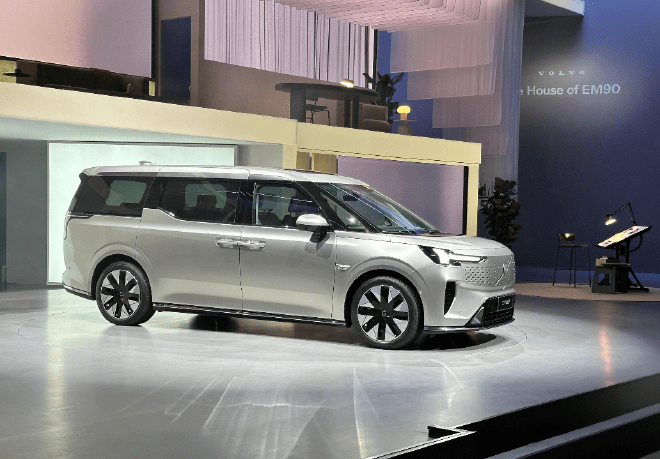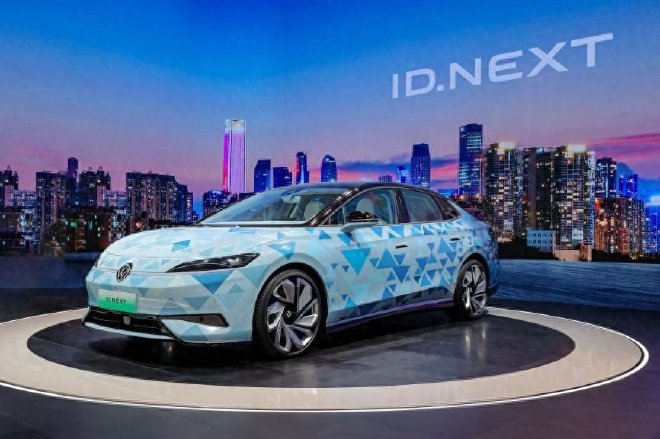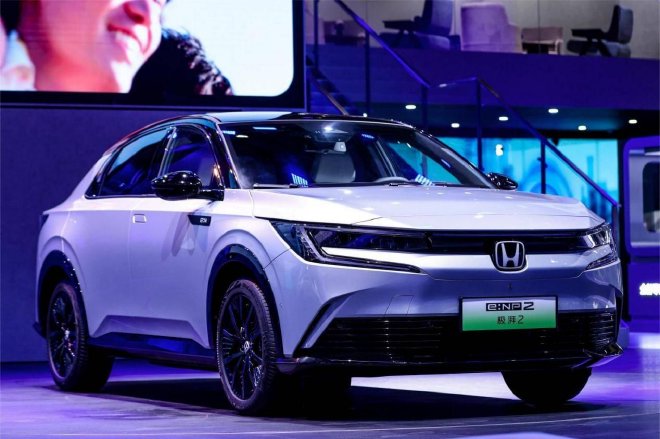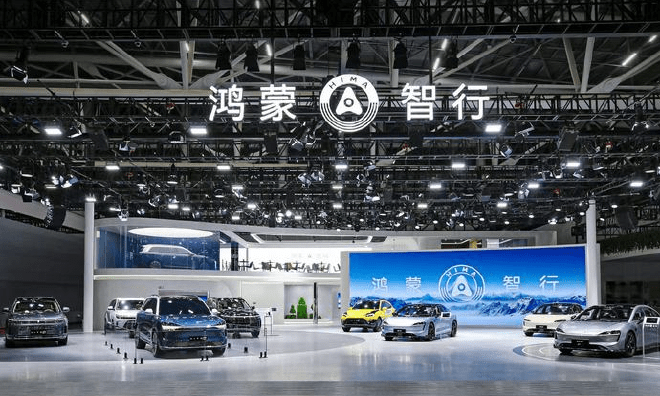The 10-day Guangzhou Auto Show, the last A-level show of 2023, officially opened on November 17th with the theme “New Technology, New Life”.
The organizers announced that the total number of cars on display at this car show reached 1132, including 59 global debuts, 469 new energy vehicles, and a record high number of new energy vehicles. As one of the three major auto shows in China, the Guangzhou Auto Show is considered the year-end finale and is known as the “barometer of the next year’s car market.” It has attracted many mainstream global car companies, new and old brands competing on the same stage, bringing a brand new experience of intelligent travel. At the same time, this year’s Guangzhou Auto Show has conveyed new trends to the industry. While new energy vehicles continue to take the spotlight, there have also been breakthroughs in technology and a disruptive impact on the travel experience through intelligence, leading the development of new trends and new formats in the automotive industry. Trend 1: New energy vehicles once again become the focus When many people are still complaining about the range anxiety of new energy vehicles and believe that gasoline vehicles are the best choice, the lineup of new cars at this year’s Guangzhou Auto Show has completely overturned the traditional perception of these people, making it clear that new energy vehicles are the highlight of this show. On the media day, whether it was traditional luxury giants, mainstream joint venture brands, or independent brands, they were all talking about their future plans for new energy products, with little mention of gasoline vehicles.
The “new forces of car making” represented by “We Xiaoli”, including “Lantu”, “Jihu”, “Zhiji”, “Shenlan” and other “second-generation entrepreneurs”, as well as “Jike”, “Jiyue”, “Avita” and other intelligent pure electric new brands, all made their debut. Data shows that in 2019, the total number of exhibition vehicles at the 17th Guangzhou Auto Show was 1059, with 112 new energy vehicles on display. By 2023, the total number of exhibition vehicles at the Guangzhou Auto Show had increased to 1132, with 469 new energy vehicles on display, including 350 domestic brands. From the data, it can be seen that in three years, the proportion of new energy vehicles at the Guangzhou Auto Show has soared from 10% to 41%. In response to this, Cui Dongshu, secretary-general of the National Passenger Car Market Information Joint Conference, pointed out: “At this Guangzhou Auto Show, various car companies have made new energy vehicles a priority, highlighting the accelerating trend of the industry’s new energy transformation.” The latest data from the China Association of Automobile Manufacturers shows that in the first 10 months of this year, China’s sales of new energy vehicles reached 7.28 million, an increase of 37.8% year-on-year, with a market share of 30.4%. New energy vehicles have become the main players in the automotive market. It is worth mentioning that the number of pure electric vehicles at this year’s Guangzhou Auto Show has increased significantly. Although the growth rate of pure electric vehicles is currently being surpassed by plug-in hybrid vehicles, many car companies are still giving a clear answer with their actions, indicating that they still believe that pure electric vehicles are the ultimate form of new energy vehicles. The new energy vehicles launched by the new forces of car making have attracted widespread attention, and the second-generation entrepreneurs of traditional car companies are also highly popular. For example, at the Avita booth, the Avita 12 was surrounded by a large crowd. This model was recently officially announced with a selling price, and it is reported that it has already received over 15,000 orders. Currently, the Avita 12, with its avant-garde exterior design, luxurious interior configuration, strong power performance, and rich intelligent technology functions, demonstrates Avita’s leading position in the field of new energy.
Another popular pure electric vehicle is the Geely Galaxy E8, the first model of the “Intelligent Pure Electric E Series”, based on the SEA Haohan architecture. The new car adopts a completely new design style, equipped with an ultra-wide 45-inch 8K borderless intelligent screen, and is equipped with the Qualcomm fourth-generation automotive cockpit chip Snapdragon 8295, providing a great smart interaction experience. Also, the new BYD booth’s spotlight is the Hai Shi 07 EV, built on the BYD e-platform 3.0, using CTB battery integrated body technology, rear five-link independent suspension design, and equipped with iTAC technology and Yunde C intelligent damping body control system, which has also attracted a lot of attention. In addition, the first public appearance or first announced price of pure electric new cars such as the Zhijie S7, Jike 007, Haobo HT, Jixing 4, Jihu Alpha T5, Lingpao C10, Xingtu Xingjiyuan ES, etc., have attracted the majority of the public’s attention at the auto show. Furthermore, multinational car companies, Volkswagen Group brought the new members of the ID series, Volkswagen ID.VIZZION and ID.NEXT, while General Motors showcased the Cadillac Optiq and Buick Electra E5 based on the General Ultium platform, and BMW’s booth includes the heavyweight new BMW i5 and other models. In addition, the luxury car brand Mercedes-Benz Vision One-Eleven concept car made its China debut at the Guangzhou Auto Show, featuring industry-leading axial magnetic flux motors, augmented reality, and other new technologies. The brand also unveiled a new E-Class electric car developed by China, equipped with the L2+ navigation assisted driving system, which debuted in China. At the BMW booth, the new BMW 5 Series long-wheelbase version and the all-electric BMW i5 made their global debut, while the new BMW X2 began pre-sales, sparking discussions within the industry. The new BMW i5 continues the strong design and technological attributes of the new BMW 5 Series, giving it a competitive edge in the market. Looking at the new energy vehicles unveiled at this year’s Guangzhou Auto Show, it’s clear that the competition in the 2024 automotive market will be even fiercer, not only between domestic brands but also from pressure coming from multinational brands. Trend two: New energy MPVs becoming a new blue ocean Given the intense competition in the current new energy vehicle market, car companies have had to explore new niche markets, such as the relatively small market for pure electric MPVs. With more Chinese brand MPV products entering the market, this niche market is expected to become a new blue ocean in the new energy vehicle market, driving the MPV market against the odds. First, let’s take a look at the new force in the automotive industry. Ideal Auto, which made its first bucket of gold with an extended-range vehicle, has rapidly expanded its product lineup this year and successfully claimed the title of new force leader.
At this year’s Guangzhou Auto Show, Ideal Auto brought its first pure electric vehicle, the MPV Ideal MEGA, which is targeted at the household market. The car features a bullet-like design style, similar to the front of a high-speed train, achieving a drag coefficient of 0.215Cd for the entire vehicle. Ideal officials stated that the MEGA is the world’s lowest energy consumption pure electric four-wheel drive MPV, with a price of less than 600,000 yuan (83900$), and will officially begin delivery on January 31 next year. Whether the Ideal MEGA meets everyone’s aesthetic standards is hard to judge, but judging from the market’s enthusiasm, this car is still highly anticipated. In addition to the Ideal MEGA, another MPV at this year’s Guangzhou Auto Show, the Xiaopeng X9, also has high popularity. Like the Ideal MEGA, the Xiaopeng X9 is also positioned as a medium to large pure electric MPV, with a pre-sale price set at 388,000 yuan (54260$). It is reported that the Xiaopeng X9 is the first to be equipped with Xiaopeng’s fifth-generation intelligent cockpit system XOS Tianji, in addition to a color TV, refrigerator, air suspension, rear-wheel active steering, and even two laser radars. This pre-sale price of 388,000 yuan (54260$) is considered Xiaopeng’s direct response to the Ideal MEGA. In addition to the new forces in car manufacturing, traditional car companies are also striving to catch up. Great Wall Motors, which has always focused on pickup trucks, off-road vehicles, and SUVs, also brought its first high-end new energy MPV, the WEY Gao Shan, to the show. For this new car, Great Wall Motors President Mu Feng made a bold statement, aiming to redefine the positioning of MPVs, take control of pricing, and end the “chaos” of million-yuan MPV price increases. Thanks to the MPV-exclusive platform, the internal space of the WEY Gao Shan is impressive. With a length of 5 meters, the interior can reach a space size of 5.2 meters, achieving a room rate of 61.1%, allowing users to enjoy a spacious and free space similar to a large flat floor, providing a first-class cabin experience while also solving the problem of difficult parking.
It is worth mentioning that Volvo’s first pure electric luxury MPV EM90, which was recently launched, made its official debut at the Guangzhou Auto Show, with a price of 818,000 yuan (114390$). In line with Volvo’s longstanding safety concept, this vehicle also has strong safety advantages. Unlike traditional MPV models, which generally have lower safety levels than sedans and SUVs, the Volvo EM90 adopts a body-battery integrated design, with the battery protected within a high-strength cage body. Combined with a 5G cloud-based BMS system, it can minimize the risk of battery smoking and fire. In addition, German carmakers, including Volkswagen, are not going to miss out on the new energy MPV market segment. At this year’s Guangzhou Auto Show, the Volkswagen ID.Buzz made its debut. Based on the Volkswagen MEB platform, the new car is positioned as a pure electric MPV. It is reported that the Volkswagen ID.Buzz will offer standard and long-wheelbase versions, and will initially be imported, with the possibility of being domestically produced in the future by SAIC Volkswagen. Different from the ultra-luxurious configurations offered by Chinese brands, the Volkswagen ID.Buzz has average body dimensions and lacks the “core competitiveness” of features such as smart screens, refrigerators, and sofas. Its biggest highlight is the continuation of the classic Volkswagen T1, incorporating modern electric technology to bring a classic and stylish new energy MPV to global car enthusiasts. In addition to the above new energy MPV models, there are also many MPVs such as GAC E8, Hechuan V09, JAC Ruifeng RF8, Buick Century’s Yunsuiyin, Tengshi D9 founding version, and SAIC Datong G70, all of which have made a stunning appearance at this year’s Guangzhou Auto Show, allowing this once niche car model to shine. Trend 3: Joint ventures continue to strengthen electrification In the first half of the new energy vehicle market, due to the failure to keep up with the electrification pace of the Chinese market, many mainstream joint venture automakers have seen sales pressure. According to the October sales data released by the China Passenger Car Association, mainstream joint venture brands sold 680,000 units, a year-on-year decrease of 2% and a month-on-month increase of 1%. In order to regain lost market share, this year’s Guangzhou Auto Show has become a good opportunity for joint venture automakers to regain attention. Many joint venture automakers with previously low sales have launched heavy-duty new cars. For example, Kia has brought the EV5, which is very important for Kia and is a key part of its electrification transformation. Kia executives stated in an interview that Kia’s electrification transformation in China is unwavering. In March of this year, Kia held EV DAY in China, and subsequent models such as EV6, EV5, EV4, EV3, and EV9 will enter the Chinese market in a timely manner. Among them, the EV5 is a global model, making its debut in China, which also indicates that Kia has placed the Chinese market in a very strategic position. Volkswagen brought 25 models to this auto show, including the high-end pure electric concept car ID.NEXT leading the ID. Family, including the new Touareg, Passat, Tiguan L, Teramont family, Viloran, and Lingdu L fuel vehicle models, all made an appearance.
As the first high-end pure electric car in the ID series, the ID.NEXT will be produced by SAIC Volkswagen. It has a unique and aesthetically pleasing appearance, and the extensive use of biobased materials in the body effectively reduces energy consumption, helping to reduce the carbon emissions of the entire vehicle by 55%. This car also expresses Volkswagen’s vision of leading future green travel. SAIC General Motors has brought a variety of pure electric models to the market, including the mid-size SUV Cadillac IQ RuiGe, the intelligent electric five-seater SUV Buick ELECTRA E5, and the intelligent electric coupe SUV Buick ELECTRA E4. These models also include the Cadillac IQ RuiGe rear-wheel drive standard range luxury version. In addition, Cadillac has also announced plans to launch three new electric models in 2024. With the support of numerous new energy vehicle models and the rapid expansion of the “Aotengneng platform product family,” SAIC General Motors’ scale effect in the electric vehicle market is increasingly evident. By the end of October, SAIC General Motors had sold nearly 70,000 new energy vehicles in 2023. Interestingly, Japanese car brands, which are recognized as slow in their electrification transformation, have also shown a more aggressive side at this year’s Guangzhou Auto Show. Honda’s two joint venture brands, GAC Honda and Dongfeng Honda, showcased the e:NP2 and e:NS2, two new pure electric cars set to be launched in 2024.
Among them, GAC Honda’s e:NP2 will be launched in the first half of next year. The new car is based on the e:NP2 Prototype that debuted at the Shanghai Auto Show, positioned as a compact electric SUV, born on the Honda e:N Architecture F electric platform, sharing the same platform as the e:NP1, but this car will be launched a year later than originally planned. In addition to the e:NS brand, Dongfeng Honda has also launched the strong electric hybrid brand and the Lingxi new energy brand, forming three major new energy brand segments. The e:NS2 and Lingxi L will both be launched in 2024, demonstrating Dongfeng Honda’s determination to transform, while also upgrading its distribution channels. Nissan, which also hopes to turn its fortunes around in the Chinese market, continues to insist on the parallel development of three power paths: fuel, electric, and hybrid. Dongfeng Nissan has also announced plans to launch four new energy vehicle models in the next three years, emphasizing the importance of this market in the company’s development strategy. It is reported that Dongfeng Nissan’s first new energy vehicle will be released in 2024. Looking at the schedule of joint venture car companies, it is clear that all-new products featuring the latest technology will be concentrated in 2025. Competition in 2024 remains fierce, and in order to ensure that market share is not eroded, joint venture car companies are beginning to implement cost-effective strategies at the Guangzhou Auto Show. For example, the Toyota Baojun 4X starts at 179,800 yuan (25140$), the Kia EV5 has a starting price of 149,500 yuan (20910$), the Cadillac Rui Ge starts at 297,700 yuan (41630$), and the Polestar 4 starts at 299,900 yuan (41940$), forming a sharp contrast with the higher prices sought by domestic car companies. In addition, the all-new generation of the Camry has added a plug-in hybrid version, and the infotainment system is developed in collaboration with Huawei, featuring the 8155 chip. It is a standout in the midsize sedan market, but according to sources within GAC, the price of the new generation model is expected to drop to 170,000 yuan (23770$) after launch. Regardless of whether joint venture car companies can reverse the market, it is clear from this year’s Guangzhou Auto Show that they are full of fighting spirit, regaining some attention and using the show as a new starting point to accelerate towards electrification. Trend Four: Car companies are starting to embrace smart technology As competition in the new energy vehicle market intensifies, car companies are focusing on price, configuration, and technology, which are still the key themes of this year’s Guangzhou Auto Show.
At this year’s auto show, another new trend is the winding technology, the most typical being the 800V high-voltage fast charging technology. After Xiaopeng G6 and Zhiji LS6 brought the 800V technology to the 200,000-level cars, the industry has set off a trend of adopting the 800V technology. This year’s Guangzhou Auto Show also concentrated on showcasing this trend. Due to the 800V platform’s ability to greatly increase charging power and reduce charging time, many car companies have begun to layout supercharging. Against this background, the “800V high-voltage platform” has undoubtedly become a high-frequency term at this year’s auto show. According to incomplete statistics, products including Geely Galaxy E8, Jikey 007, Audi Q6 e-tron, Xingtu Xingjiyuan ES, Ideal MEGA, and Zhijie S7 at this year’s Guangzhou Auto Show will all be equipped with 800V supercharging technology. From this trend, the 800V high-voltage fast charging technology is expected to accelerate towards mass popularization. As the core of electric vehicles, the importance of power batteries is self-evident. At this year’s Guangzhou Auto Show, car companies have also made new breakthroughs in this field. Among them, Changan Automobile has launched a new battery brand named “Golden Armor.” At the same time, Changan Automobile also plans to develop semi-solid and solid-state batteries. It is expected to introduce products with a weight energy density of 350-500Wh/kg and a volume energy density of 750-1000Wh/L by 2027, and gradually put them into mass production and application, achieving comprehensive popularity in 2030, completely solving the range anxiety of electric vehicle owners. Guangzhou Automobile Group has also made breakthrough progress in solid-state batteries. It is reported that when the energy density of the battery reaches 400Wh/kg, it can meet the safety and reliability requirements of the battery in extreme environments, and plans to officially adopt solid-state batteries in 2026. It is worth mentioning that intelligent technology is still the focus of this year’s auto show. With the accelerated implementation of urban assisted driving technology, the competition among car companies in this area is also very intense. Among them, the top-of-the-line model of the Zero Run C10 will add a lidar, which can support advanced level L3 assisted driving; the Krypton 007 is equipped with 3 lidars, Orin X chip, and a self-developed advanced smart driving solution. In addition, the Haobo HT will also be equipped with 3 lidars, a total of 33 perception hardware, and will have the “highway + city” NDA intelligent navigation assistance system. When it comes to intelligent assisted driving, Xiaopeng Motors naturally has a place. The new car Xiaopeng X9 is equipped with the Xiaopeng XNGP intelligent assisted driving system, which adopts a light map solution and has the technical ability to support intelligent driving in cities nationwide.
Another factor that cannot be ignored is “Hongmeng Intelligent Travel”. As a strategic upgrade of Huawei’s smart car model, the intelligent travel solution of Hongmeng Intelligent Travel includes HUAWEI ADS 2.0 advanced intelligent driving, iDVP intelligent car digital platform, HarmonyOS intelligent cockpit and intelligent chassis system, DriveONE golden power platform and efficient electric drive system. During the Guangzhou Auto Show, the Wanjie M5, Wanjie M7, Wanjie M9, and Zhijie S7 models at the Hongmeng Intelligent Travel booth attracted a lot of attention, all of which are equipped with Hongmeng intelligent cockpit. In addition, models such as Jianghuai Ruifeng RF8 and Avita cars are also users of Hongmeng intelligent cockpit, and they are also very popular. Clearly, at this year’s Guangzhou Auto Show, car companies have already launched a new competition for the “barometer” of intelligence.
